301b F5 LTM Specialist: Maintain & Troubleshoot Free Practice Exam Questions (2025 Updated)
Prepare effectively for your F5 301b LTM Specialist: Maintain & Troubleshoot certification with our extensive collection of free, high-quality practice questions. Each question is designed to mirror the actual exam format and objectives, complete with comprehensive answers and detailed explanations. Our materials are regularly updated for 2025, ensuring you have the most current resources to build confidence and succeed on your first attempt.
An HTTP 1.1 application utilizes chunking.
Which header should be used to notify the client's browser that there are additional HTTP headers at the end of the message?
An LTM Specialist realizes that a datacenter engineer has changed the console baud rate.
Which command determines the current baud rate via the command line interface?
A BIG-IP Operator has made a grave error and deleted a few virtual servers on the active LTM device fronting the web browsing proxies. The BIG-IP Operator has NOT yet performed a configuration sync.
Which command should the LTM Specialist execute on the active LTM device to force a failover to the standby node and restore web browsing?
-- Exhibit –

-- Exhibit --
Refer to the exhibit.
Which profile could be removed or changed on this virtual server to reduce CPU load on the LTM device without increasing server side bandwidth usage?
-- Exhibit –
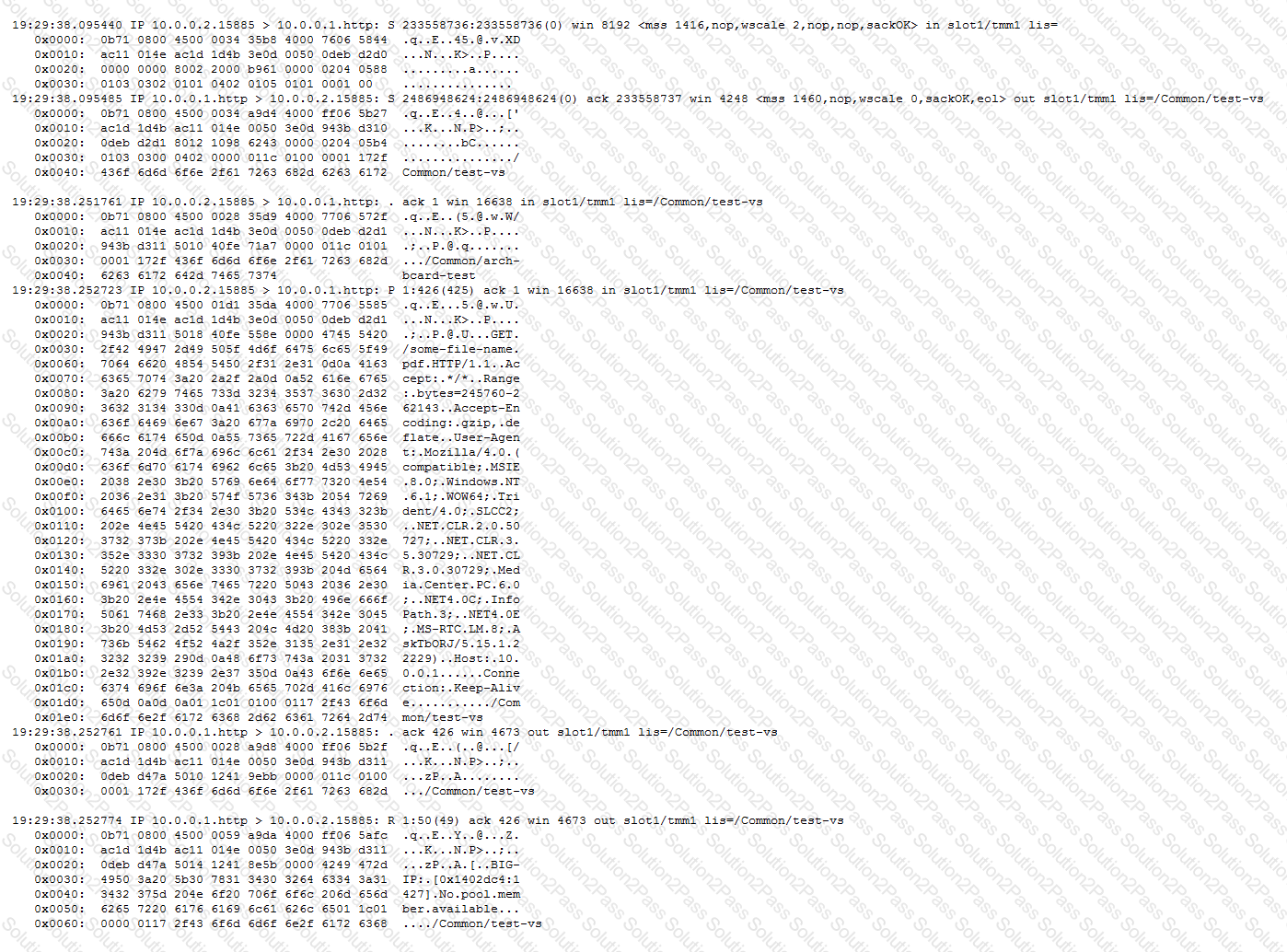
-- Exhibit --
Refer to the exhibit.
A user is unable to access an HTTP application via a virtual server.
What is the cause of the failure?
An LTM Specialist is troubleshooting a problem on an eCommerce website. The user browses the online store using port 80, adding items to the shopping cart. The user then clicks the "Checkout" button on the site, which redirects the user to port 443 for the checkout process. Suddenly, the user's shopping cart is shown as empty. The shopping cart data is stored in memory on the server, and the default source address persistence profile is used on both virtual servers.
What is the issue?
-- Exhibit –
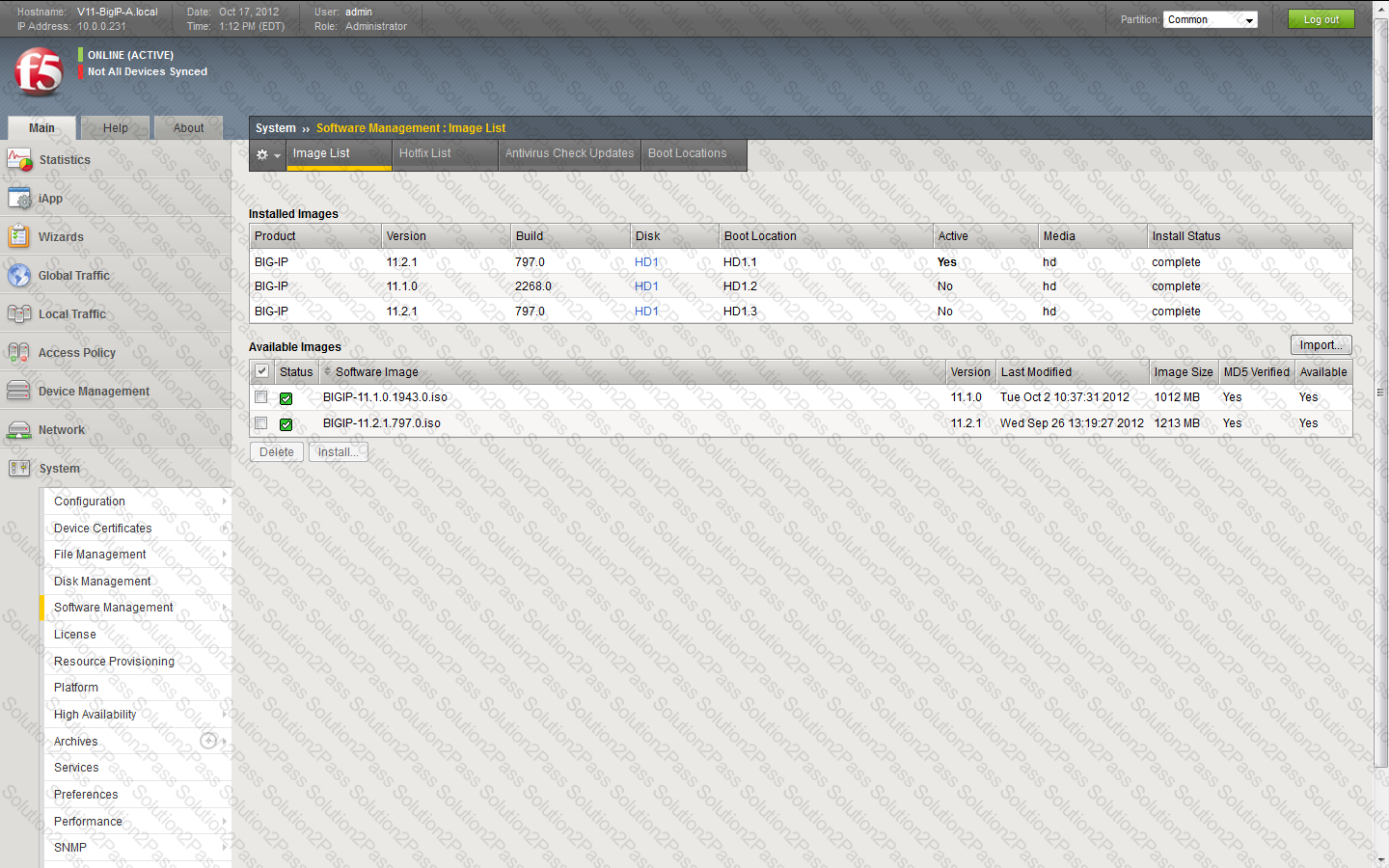
-- Exhibit --
Refer to the exhibit.
An LTM Specialist has uploaded a qkview to F5 iHealth.
Within the GUI, what is the correct procedure to comply with the recommendation shown in the exhibit?
An LTM Specialist with the Administrator role and terminal access of "tmsh" logs in via ssh and is in the Traffic Manager Shell. The LTM Specialist wants to enter the bash shell to review log files.
Which command does the LTM Specialist need to run to access the bash shell?
Windows PC clients are connecting to a virtual server over a high-speed, low-latency network with no packet loss.
Which built-in client-side TCP profile provides the highest throughput for HTTP downloads?
-- Exhibit –
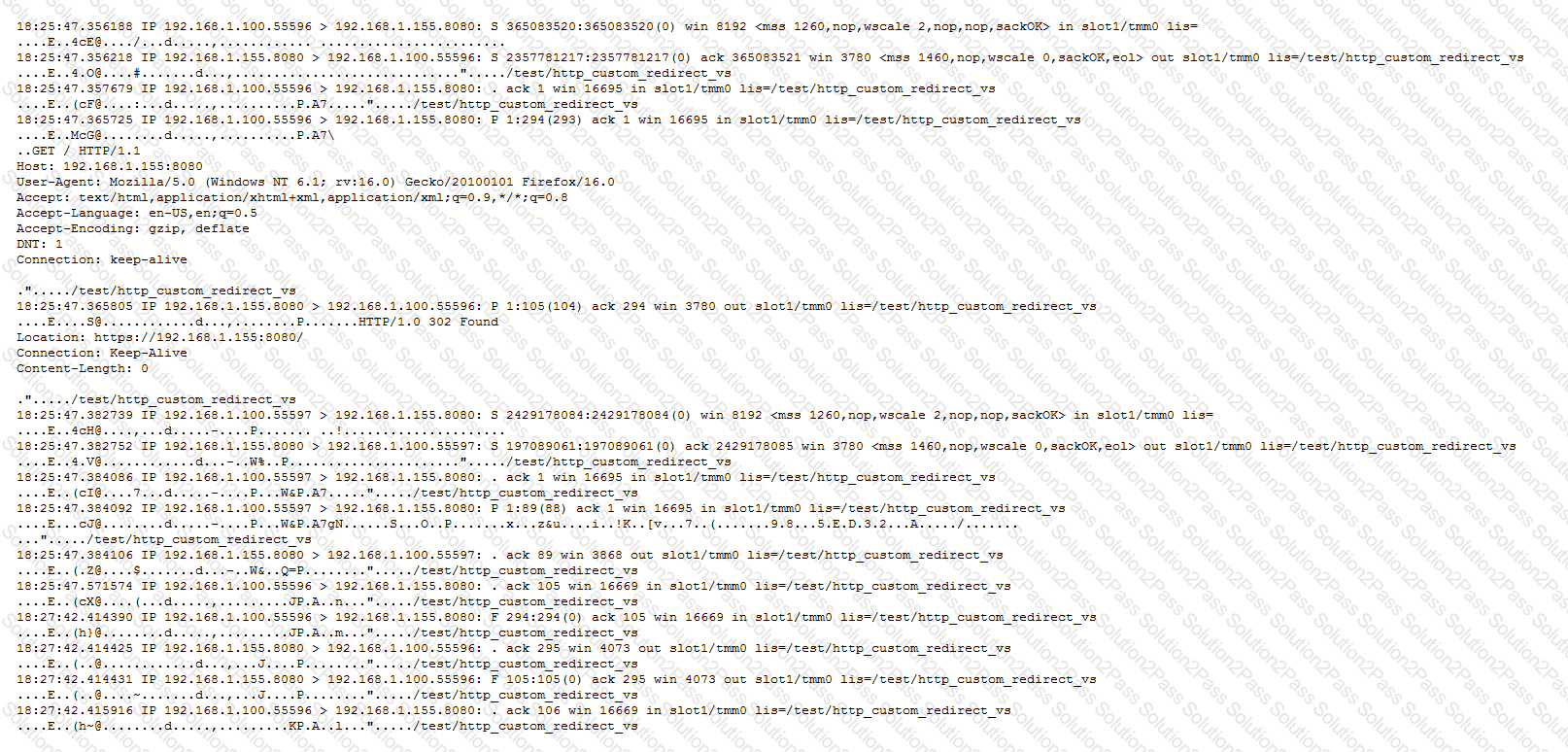
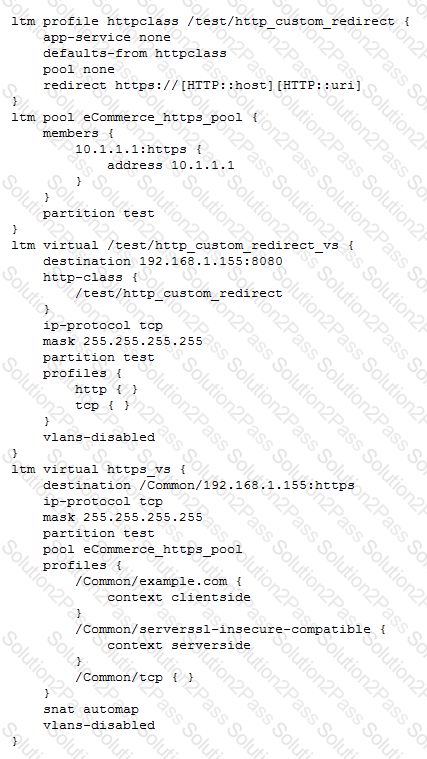
-- Exhibit --
Refer to the exhibits.
An LTM Specialist is reconfiguring a virtual server to redirect all clients to HTTPS. Testing reveals that the redirect is functioning incorrectly. As part of the troubleshooting process, the LTM Specialist performs a packet capture.
What is the issue?
An LTM Specialist is customizing local traffic logging.
Which traffic management OS alert level provides the most detail?
-- Exhibit –

-- Exhibit --
Refer to the exhibit.
An LTM Specialist has created a virtual server to load balance traffic to a pool of HTTPS servers. The servers use client certificates for user authentication. The virtual server has clientssl, serverssl, and http profiles enabled. Clients are unable to connect to the application through the virtual server. Clients are able to connect to the application servers directly.
What is the root cause of the problem?
-- Exhibit –
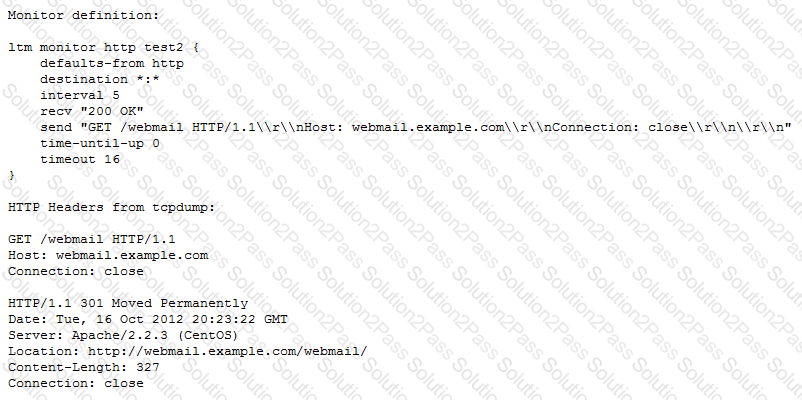
-- Exhibit --
Refer to the exhibit.
An HTTP monitor always marks the nodes in the pool as down. The monitor's definition and the HTTP headers from the monitor request and response are provided.
What is the issue?
An LTM Specialist is troubleshooting an HTTP monitor. The pool member is accessible directly through a browser, but the HTTP monitor is marking the pool member as down.
GET / HTTP/1.1
HTTP/1.1 400 Bad Request
DatE. Tue, 23 Oct 2012 21:39:07 GTM
Server: Apache/2.2.22 (FreeBSD) PHP/5.4.4
mod_ssl/2.2.22 OpenSSL/0.9.8q DAV/2
Content-LengtH. 226
Connection: close
Content-TypE. text/html; charset=iso-8859-1
How should the LTM Specialist resolve this issue?
-- Exhibit –
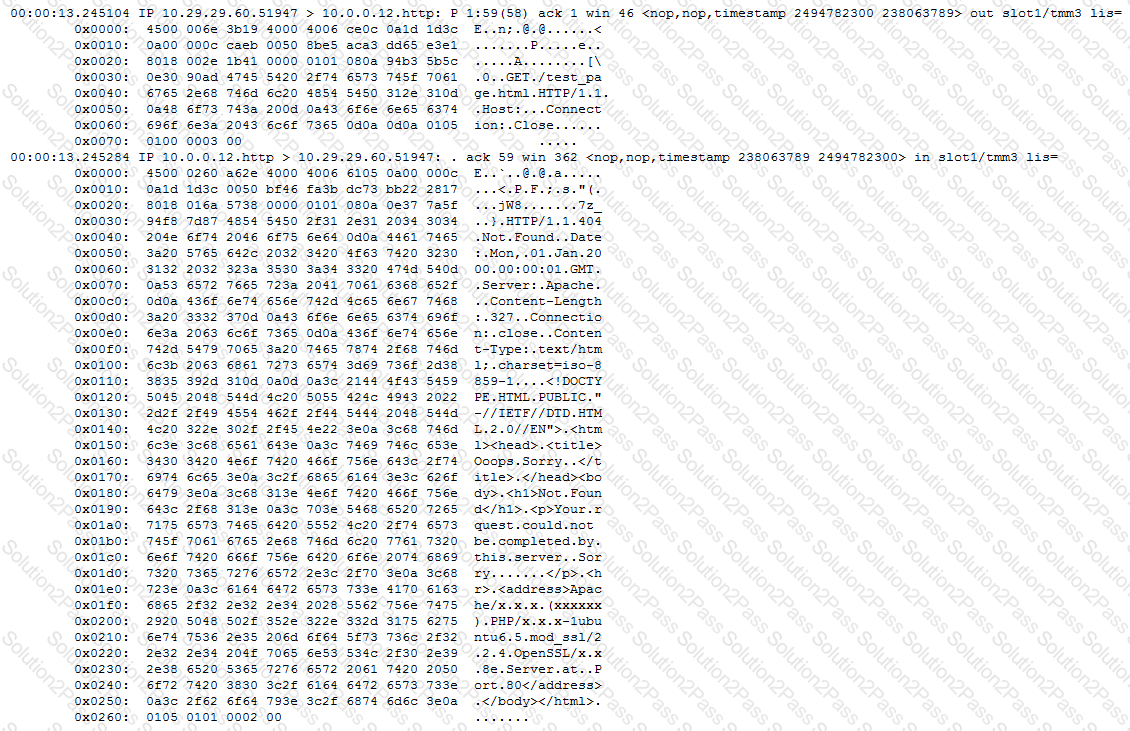
-- Exhibit --
Refer to the exhibit.
The decoded TCPDump capture is a trace of a failing health monitor. The health monitor is sending the string shown in the capture; however, the server response is NOT as expected. The receive string is set to 'SERVER IS UP'.
What is the solution?
Given this as the first packet displayed of an ssldump:
2 2 1296947622.6313 (0.0001) S>CV3.1(74) Handshake
ServerHello
Version 3.1
random[32]=
19 21 d7 55 c1 14 65 63 54 23 62 b7 c4 30 a2 f0
b8 c4 20 06 86 ed 9c 1f 9e 46 0f 42 79 45 8a 29
session_id[32]=
c4 44 ea 86 e2 ba f5 40 4b 44 b4 c2 3a d8 b4 ad
4c dc 13 0d 6c 48 f2 70 19 c3 05 f4 06 e5 ab a9
cipherSuite TLS_RSA_WITH_RC4_128_SHA
compressionMethod NULL
In reviewing the rest of the ssldump, the application data is NOT being decrypted.
Why is ssldump failing to decrypt the application data?
Which command should the LTM Specialist use to determine the current system time?
A client (10.10.1.30) connecting to an HTTPS virtual server (10.10.1.100) with a clientssl profile is getting an SSL error.
Which options will trace this issue?
An LTM HTTP pool has an associated monitor that sends a string equal to 'GET /test.html'.
Which two configurations could an LTM Specialist implement to allow server administrators to disable their pool member servers without logging into the LTM device? (Choose two.)
-- Exhibit –
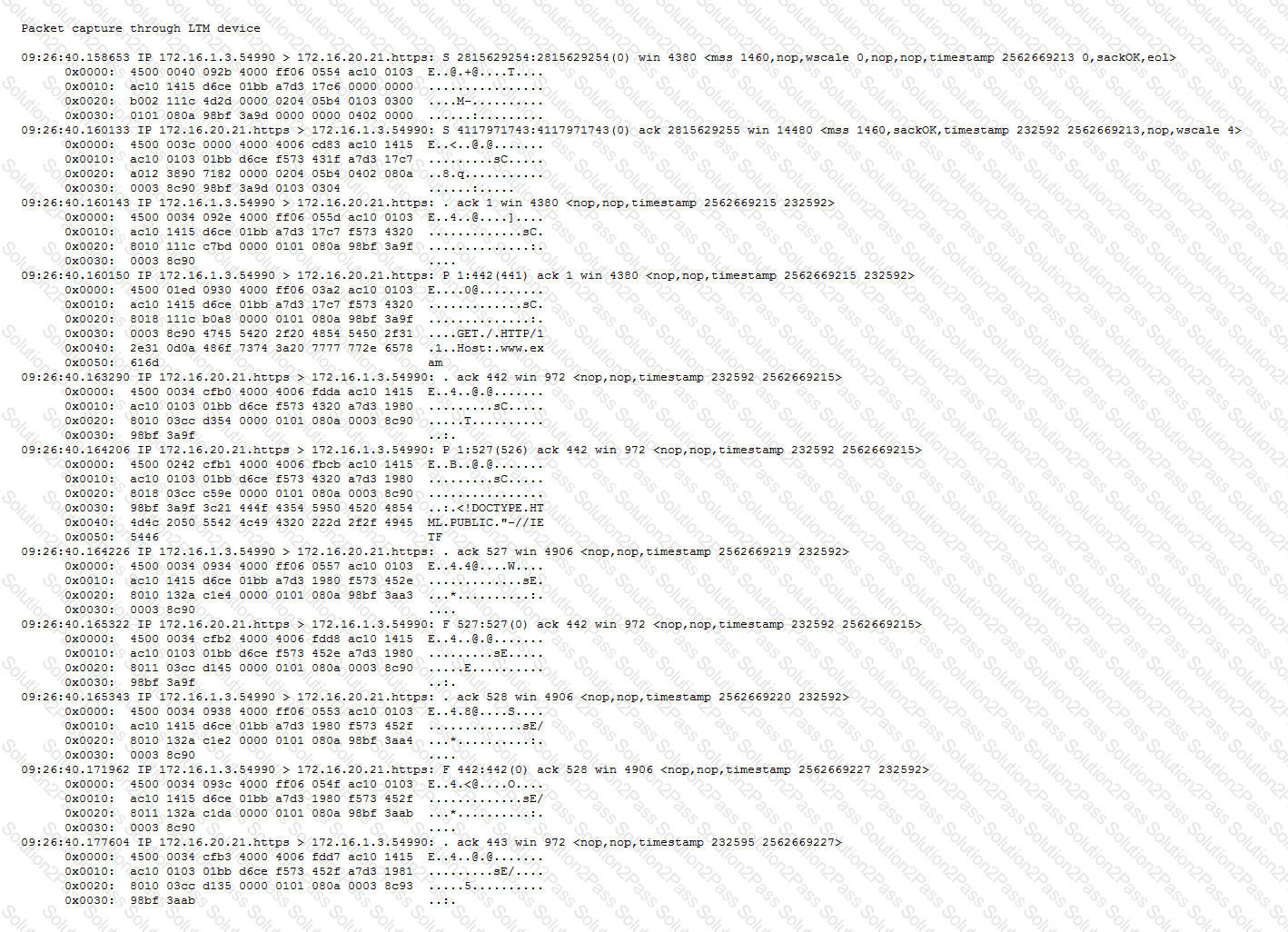
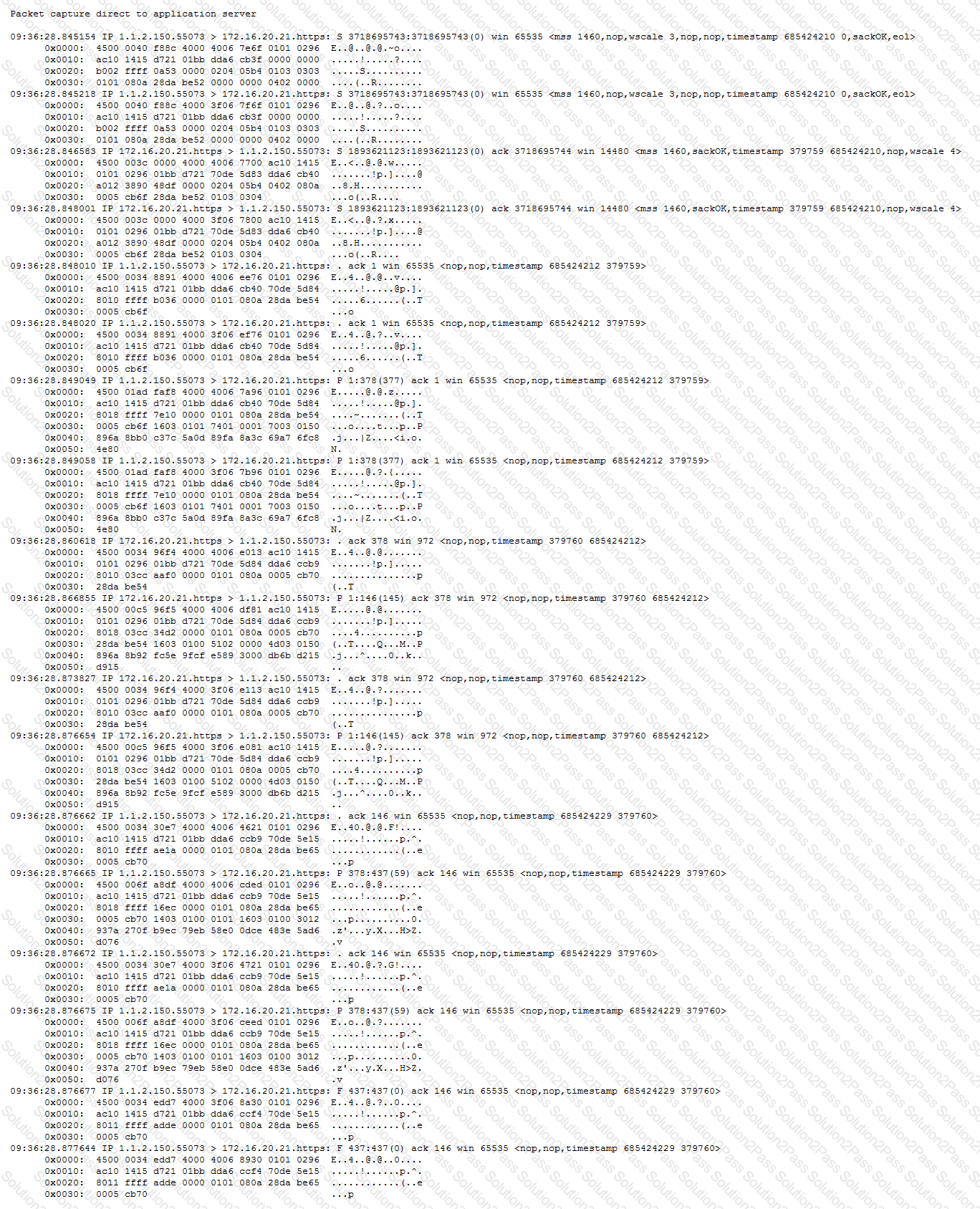
-- Exhibit --
Refer to the exhibits.
An LTM Specialist has configured a virtual server to distribute connections to a pool of application servers and to offload SSL processing. The application fails to work as expected when connecting to the virtual server. It does work when clients connect directly to the application. Two packet captures were taken at the application server.
What is the root cause of the problem?
